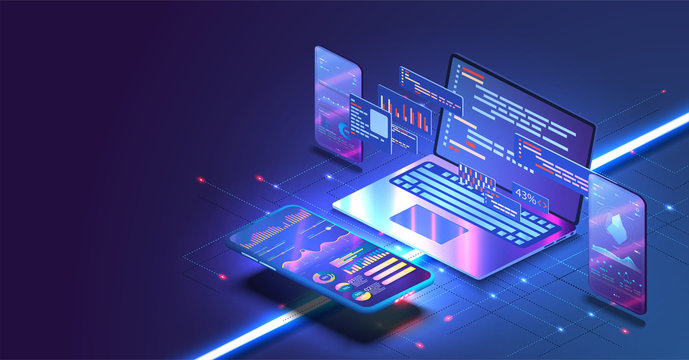In today’s fast-paced healthcare environment, efficiency is no longer optional—it is a necessity. Clinical workflows, the backbone of patient care delivery, are increasingly dependent on digital tools that streamline processes, reduce errors, and enable healthcare professionals to focus more on patient outcomes. From electronic health records (EHRs) to AI-driven analytics, the right digital solutions can transform how hospitals, clinics, and medical practices operate. This blog explores the most impactful digital tools for enhancing clinical workflows, the benefits they bring, and how healthcare providers can integrate them for maximum value.
Understanding Clinical Workflows in Modern Healthcare
Clinical workflows refer to the sequence of tasks, processes, and interactions that healthcare providers undertake to deliver care. These workflows often span patient intake, diagnostics, treatment, documentation, billing, and follow-up care. Without optimization, these processes can be fragmented, leading to inefficiencies, higher costs, and compromised patient experiences.
In recent years, digital transformation in healthcare has shifted the way workflows are designed and executed. Cloud-based platforms, automation tools, and connected medical devices have replaced manual, paper-based systems, leading to more cohesive and patient-centered care.
The Importance of Choosing the Right Digital Tools
Selecting digital tools is not just a matter of upgrading technology—it’s about aligning solutions with the operational and clinical needs of the organization. The wrong tool can lead to poor adoption, wasted resources, and workflow disruptions. The right one, however, can:
- Improve care coordination across departments
- Reduce administrative burdens
- Minimize errors through automation and standardization
- Enhance real-time decision-making
- Boost patient satisfaction and engagement
1. Electronic Health Records (EHR) Systems
Centralizing Patient Information for Better Care
EHR systems are at the core of modern clinical workflows. They allow providers to access patient records instantly, track medical history, and update treatment plans in real time. Advanced EHRs also integrate lab results, imaging data, and prescriptions, creating a single source of truth for patient care.
Benefits of EHR Integration:
- Improved accessibility: Authorized staff can access records anytime, anywhere.
- Reduced errors: Automated alerts flag potential drug interactions or missing information.
- Streamlined communication: Providers and patients can communicate via secure portals.
Many healthcare facilities in the U.S. have partnered with AI software development services USA experts to create custom EHR solutions that incorporate AI-driven decision support and predictive analytics, enabling more precise and proactive care delivery.
2. Clinical Decision Support Systems (CDSS)
Supporting Evidence-Based Care
CDSS platforms analyze patient data and provide evidence-based recommendations to assist healthcare professionals in making informed decisions. These systems often work alongside EHRs, providing alerts about abnormal lab results, suggesting treatment guidelines, or highlighting potential adverse drug reactions.
Key Advantages:
- Real-time guidance for diagnosis and treatment
- Integration with medical literature for updated research access
- Reduced diagnostic errors through data-driven insights
When integrated well, CDSS tools can reduce decision fatigue and allow physicians to focus on complex cases where human judgment is critical.
3. Telehealth and Virtual Care Platforms
Extending Care Beyond Hospital Walls
Telehealth platforms have become essential for connecting patients and providers remotely. They offer video consultations, remote monitoring, and digital prescription services, helping healthcare organizations deliver care to rural or underserved communities.
Core Benefits:
- Accessibility: Patients can connect from home, reducing travel time.
- Efficiency: Virtual visits often require less administrative coordination.
- Continuity of care: Providers can follow up with patients regularly.
By integrating telehealth with scheduling, billing, and EHR systems, providers can create a seamless patient experience while reducing bottlenecks in appointment management.
4. Internet of Medical Things (IoMT) Solutions
Connecting Devices for Real-Time Data Flow
IoMT refers to a network of connected medical devices—such as wearable heart monitors, infusion pumps, and wireless vital sign sensors—that collect and transmit health data in real time. These solutions provide continuous monitoring, allowing for earlier detection of issues and faster interventions.
A custom iot development company can design tailored IoMT ecosystems that securely connect devices with hospital systems, ensuring interoperability, compliance with healthcare regulations, and high-availability performance.
Benefits:
- Proactive patient monitoring with alerts for anomalies
- Data-driven care planning based on continuous insights
- Improved chronic disease management through remote tracking
5. Workflow Automation and Task Management Platforms
Reducing Administrative Burden
Many clinical workflows are bogged down by repetitive administrative tasks—such as appointment confirmations, billing, and inventory tracking. Workflow automation tools streamline these processes through rule-based triggers and digital scheduling.
Benefits:
- Time savings for medical staff
- Consistency in task execution
- Integration with other systems to avoid duplication
From automated patient reminders to intelligent claims processing, these tools help healthcare providers operate more efficiently and reduce operational costs.
6. Artificial Intelligence and Predictive Analytics
Turning Data Into Actionable Insights
AI and predictive analytics tools can analyze massive volumes of patient and operational data to identify patterns, forecast risks, and optimize treatment plans. These solutions are especially valuable for preventive care, resource allocation, and population health management.
Applications in Clinical Workflows:
- Predicting patient readmission risks
- Identifying high-risk patients for early intervention
- Forecasting hospital bed occupancy
- Optimizing staff schedules based on patient demand
When implemented ethically and with proper governance, AI tools can transform reactive healthcare into proactive, personalized care.
7. Mobile Health (mHealth) Applications
Empowering Patients and Providers on the Go
Mobile applications enable patients to track their health, communicate with providers, and access medical information in real time. For clinicians, mobile apps can provide instant access to patient charts, drug databases, and diagnostic tools.
Benefits:
- Increased patient engagement in their care
- Faster access to critical data for clinicians
- Better chronic disease management with app-based tracking
8. Data Interoperability and Integration Platforms
Breaking Down Information Silos
One of the biggest challenges in healthcare is the fragmentation of data across different systems. Interoperability platforms bridge this gap by enabling secure data exchange between EHRs, imaging systems, laboratories, pharmacies, and other health IT systems.
Benefits:
- Improved care coordination among providers
- Faster decision-making with complete patient data
- Enhanced compliance with regulatory standards like HL7 and FHIR
9. Cybersecurity and Compliance Management Tools
Safeguarding Patient Data
With the rise of digital tools comes the responsibility of protecting sensitive health information. Cybersecurity solutions designed for healthcare help prevent data breaches, ensure HIPAA compliance, and maintain patient trust.
Key Features:
- Encryption for data in transit and at rest
- Access control based on user roles
- Continuous monitoring for threats and vulnerabilities
Best Practices for Implementing Digital Tools in Clinical Workflows
- Conduct a workflow assessment before choosing tools to ensure alignment with operational needs.
- Engage end-users (doctors, nurses, admin staff) in the selection and design process.
- Ensure interoperability to avoid creating new data silos.
- Provide adequate training to encourage adoption and minimize resistance.
- Monitor performance and gather feedback to refine the solution.
- Stay compliant with healthcare regulations during implementation.
Conclusion
The right digital tools can transform clinical workflows from fragmented, manual processes into streamlined, patient-centric systems. By integrating solutions such as EHRs, CDSS platforms, IoMT devices, AI analytics, and automation tools, healthcare organizations can improve care delivery, enhance staff productivity, and achieve better patient outcomes. The focus should always be on selecting tools that align with the organization’s needs, ensuring interoperability, and fostering a culture of continuous improvement.
FAQs
1. What are clinical workflows in healthcare?
Clinical workflows are the structured processes and tasks that healthcare professionals follow to deliver patient care, from intake to discharge and follow-up.
2. How do EHR systems improve clinical workflows?
EHRs centralize patient data, enable real-time updates, and integrate with other healthcare systems, improving efficiency and reducing errors.
3. Why is interoperability important in clinical workflows?
Interoperability ensures different healthcare systems can exchange and use information seamlessly, leading to better care coordination and reduced redundancies.
4. What role does AI play in improving clinical workflows?
AI analyzes large datasets to provide predictive insights, automate routine tasks, and support evidence-based decision-making, helping clinicians work more efficiently.
5. How can IoMT improve patient outcomes?
IoMT devices enable continuous monitoring and real-time alerts, allowing for earlier interventions, better chronic disease management, and more personalized care.
6. What is the main challenge in adopting digital tools for clinical workflows?
The main challenge is ensuring that new tools integrate seamlessly into existing workflows without causing disruptions, while also meeting regulatory and security requirements.



